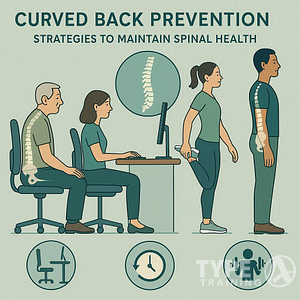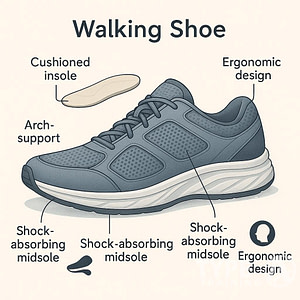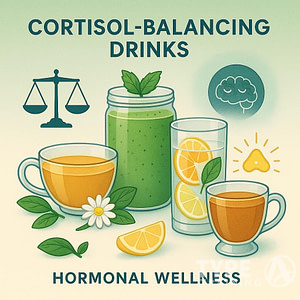Weight training is an integral part of any serious basketball player’s regimen. Developing strength and power on the court isn’t just about practicing drills and playing games; it’s also about following a tailored weight training program that enhances your performance and minimizes the risk of injury.
By targeting the specific muscles used during gameplay, you can improve your explosiveness, agility, and overall physicality, which are crucial for success in basketball.
A basketball-focused weight training program shifts throughout the year, cycling through phases that correspond with the demands of the sport’s season.
Popular posts:
During the off-season, the emphasis is on building muscle and increasing strength, while the in-season maintenance phase focuses on preserving muscle gains and maximizing power output. Core strength and stability are key year-round, as they establish the foundation for powerful movements on the court.
Moreover, incorporating plyometric exercises can enhance your explosive power, which translates directly into improved performances in activities like jumping and sprinting.
Key Takeaways
- Weight training enhances on-court performance and reduces injury risks.
- Programs cycle through phases to align with season-specific demands.
- Core stability and plyometric training are critical for basketball athleticism.
Fundamentals of a Basketball Weight Training Program
When you approach weight training for basketball, it’s crucial to tailor the exercises to the specific needs of the sport, which are driven by its intense physical demands.
Your program must build a durable foundation, accommodate your age and the level at which you perform, and focus on developing the kind of strength that basketball players require to excel.
Understanding the Game’s Physical Demands
Basketball is a high-intensity sport that requires agility, speed, and endurance. As an athlete, it’s imperative that you recognize the multifaceted nature of the game’s physical demands.
You’re often required to make quick sprints, jump high, maintain endurance throughout the game, and demonstrate explosive power for layups and rebounds. Incorporating exercises that enhance these capabilities is fundamental to a successful weight training program.
Essential Weight Training Principles for Basketball
Strength: It’s the bedrock of your athletic performance. A well-rounded program will have you working on both muscular endurance, with higher reps and lower weight, and maximal strength through lower reps with heavier weight.
Foundation: Begin with a foundational phase focused on developing a mix of endurance, strength, and hypertrophy, usually characterized by 2 to 4 sets of 12 to 15 repetitions.
Age-appropriate training: Your age plays a critical role. Younger players need to be cautious of overloading their developing bodies, while more mature athletes should consider incorporating age-appropriate strength and conditioning regimens.
Performance focus: For basketball players, the aim of weight training is often to improve specific aspects of their performance on the court, such as vertical leap and acceleration.
Building a Solid Foundation
The early preseason is the optimal time for you to build a solid foundation. During this phase, exercises should be selected to lay the groundwork for more intense training closer to the season.
The foundation program should include:
- Endurance: Develop muscular and cardiovascular endurance to keep your performance consistent throughout the game.
- Strength: Incorporate compound movements that mimic game-specific actions to improve your functional strength.
- Hypertrophy: Increase muscle size, which can contribute to better protection against injuries and improved power generation.
Remember, your program should evolve as you progress through the preseason to in-season, with a shift towards maintaining the gains you’ve made and focusing on power during the competitive period.
Off-Season Training Focus
During the off-season, your primary goal is to build a solid foundation for the upcoming season. This period is crucial for increasing strength and mass, enhancing your flexibility and mobility, and employing injury prevention strategies.
Increasing Strength and Mass
You should focus on strength training during the off-season to increase both muscle mass and strength.
Compound movements like squats and bench press are highly effective as they target multiple muscle groups. A typical approach might include:
- Squats: 3 sets of 5-10 reps
- Bench Press: 3 sets of 5-10 reps
Prioritize progressive overload to steadily increase the weight, ensuring continuous muscle and strength gains.
Improving Flexibility and Mobility
Developing your mobility and flexibility is essential to enhance your performance and reduce the risk of injury.
Implement daily stretching routines focusing on major muscle groups involved in basketball. Here’s a simple routine to incorporate:
- Hamstring Stretch: Hold for 30 seconds each leg
- Shoulder Stretch: Hold for 30 seconds each arm
Incorporate dynamic stretching before workouts and static stretching after for optimal recovery.
Injury Prevention Strategies
To prevent injury, you must not only strengthen muscles but also increase the resilience of your tendons and ligaments.
Include exercises that specifically target injury-prone areas such as the knees and ankles. Also, ensure to take adequate recovery time between intense workouts.
Your injury prevention tactics might involve:
- Plyometric exercises to strengthen tendons
- Balance training to improve joint stability
Always listen to your body and do not ignore pain signals. Regular rest and proper nutrition are key factors in supporting recovery and preventing injuries.
In-Season Maintenance
In-season maintenance focuses on balancing the intensity of strength training for basketball players with the demands of competitive play while prioritizing recovery and injury management to maintain peak performance.
Balancing Training with Competition
During the in-season period, your strength training should complement your basketball schedule. Aim for maintenance rather than progression.
Optimal frequency is typically two full-body workouts per week. Each session should consist of lower reps and fewer sets—consider three sets of 10-12 reps to combat fatigue without causing excessive strain.
It’s crucial to maintain intensity while reducing volume, allowing you to preserve strength without hindering game-day performance.
Recovery and Injury Management
Recovery is just as essential as the workouts themselves.
In-season, it’s vital to integrate ample rest and recovery time.
Listen to your body and adjust accordingly, reducing weight or reps if you experience lingering fatigue or discomfort.
To prevent injuries, incorporate exercises that strengthen areas commonly affected by basketball, such as the knees and ankles.
These movements can help stabilize your joints and support your body’s resilience against the rigors of the game.
It’s important to recognize when to take a step back; if you’re feeling pain, rest immediately. Maintaining a balance between pushing for resilience and heeding the body’s signals for rest is key to a successful in-season maintenance strategy.
Developing Core Strength and Stability
A well-designed core training program enhances your performance on the court by improving balance and stability. Core strength is the foundation for executing powerful movements and maintaining control in the chaos of a basketball game.
Targeted Core Exercises
Planks: Begin with the basic plank to build endurance in your core muscles.
Position yourself face down with your forearms and toes on the ground, keeping your body straight and hold this position.
- Traditional Plank
- Duration: Hold for 30 seconds to 1 minute.
- Frequency: 3 sets.
- Side Plank
- Duration: Hold each side for 20-30 seconds.
- Frequency: 3 sets per side.
Russian Twists: To emphasize rotational strength, which is crucial in basketball for passing and shooting, perform Russian twists.
- Seated Russian Twist
- Repetitions: 15-20 per side.
- Frequency: 3 sets with or without weight.
Integrating Core Stability into Movements
Once you’ve built a foundation of core strength, it’s important to integrate this stability into dynamic movements. This can improve your overall agility and performance on the court.
Balanced Lunges: Adding a twist to your lunges challenges your core stability.
- Lunge with Twist
- Steps: Lunge forward and rotate your torso in the direction of the leading leg.
- Repetitions: 10 per leg.
- Frequency: 3 sets.
Power and Plyometrics Training
To elevate your basketball game, it’s essential to focus on building explosive strength and fine-tuning your neuromuscular system through power training and plyometrics. These will enhance your vertical jump, agility, speed, and coordination.
Exercises for Explosive Power
Explosive Squat Jumps:
- Start in a squat position with your feet shoulder-width apart.
- Explode upwards, jumping as high as possible.
- Land softly, absorbing the impact with your legs.
For basketball players, improving explosive power can significantly increase your vertical leap ability.
Medicine Ball Throws:
- Hold a medicine ball with both hands and stand with your feet shoulder-width apart.
- Explosively throw the ball straight up or to a partner.
- Catch and repeat, ensuring you’re engaging your whole body to develop power.
Incorporating Plyometrics into Routines
Initiate a plyometric routine with fundamental movements:
- Box Jumps: Jump onto a stable box or platform and step down.
- Depth Jumps: Step off a box followed by an immediate vertical jump upon landing.
Incorporate these exercises 2-3 times weekly with adequate rest for muscle recovery.
Monitor your technique closely to reduce the risk of injury and get the most out of your plyometric workouts.
Carefully progress in intensity and complexity, potentially under the guidance of a skilled trainer. They can personalize routines to match your skill level and fitness goals.
Enhanced Conditioning for Peak Performance
A tailored strength and conditioning program is essential to elevate your basketball game.
Focusing on cardiovascular endurance and muscle endurance and toning will ensure you’re primed to perform at your peak from tip-off to the final buzzer.
Cardiovascular Endurance
To excel on the court, your heart and lungs need to be able to keep up with the high demands of the game.
Cardiovascular endurance can be improved by incorporating a mix of sustained and interval training.
Consider starting with a basic jog for sustained periods, gradually increasing your duration over time.
For intervals, you might alternate between sprinting and walking—try 30 seconds of all-out effort followed by 60 seconds of rest.
However, to specifically simulate basketball movement patterns, incorporate ladder drills. These drills boost your footwork agility, enhancing not just your endurance but also your coordination on the court.
Muscle Endurance and Toning
Your muscles need to sustain repeated contractions against resistance for prolonged periods during a game.
This is where exercises like lunges and pull-ups come in, targeting major muscle groups used in basketball.
For lunges, ensure you’re performing them with proper form; you might complete 3 sets of 15 repetitions on each leg, providing a good balance between strength and endurance.
For upper body, perform pull-ups to engage your back, shoulders, and arms, important for shooting and rebounding. Aim for 3 sets to failure, ensuring that each motion is controlled and deliberate.
This will not only build endurance but will also contribute to muscle toning, which is imperative for staying agile and strong on the court.
Technique and Safety During Training
Ensuring correct technique and prioritizing safety are fundamental to your success in a weight training program for basketball.
These aspects not only enhance your performance but also significantly reduce your risk of injury.
Proper Exercise Form
When working with weights, it’s crucial that you maintain proper form to effectively target the right muscle groups and prevent injuries.
For instance, when performing a squat, your feet should be shoulder-width apart and flat on the ground, and you need to keep your back straight while lowering your body as if sitting back into a chair.
In contrast, a deadlift demands a tight core, a neutral spine, and the barbell close to your body.
- Squatting: Keep your chest up and knees tracking over toes.
- Deadlifting: Hinge at the hips and avoid rounding your back.
Understanding the Role of a Strength Coach
Working with a strength and conditioning coach can significantly advance your training.
They’re experts in formulating workout plans that are specific to basketball and will correct your technique in real-time.
Your coach will also determine the appropriate weight levels for each exercise to align with your current strength and fitness objectives.
- Planning: Tailoring your workout to preseason, in-season, or off-season.
- Execution: Supervising your form during every exercise to ensure safety and effectiveness.
Advanced Weight Training Concepts
In advanced weight training for basketball, your focus shifts towards periodized training and the execution of complex movements that enhance your performance on the court. Let’s explore how you can integrate these advanced concepts effectively.
Periodization and Variation
Periodization is the systematic planning of weight training to maximize gains by varying the workout’s load, intensity, and volume over time.
This approach helps you avoid plateaus and overtraining. A typical periodized plan for basketball might look like this:
- Off-Season: Emphasize building muscle mass with exercises like the back squat and dumbbell bench press.
- Pre-Season: Transition to strength and power development, decreasing volume but increasing the intensity with fewer repetitions and heavier weights.
- In-Season: Maintain strength with a lower volume to accommodate game play, ensuring you’re not exhausted for matches.
Utilizing Complex Movements
Including complex movements in your routine engages multiple muscle groups, which is ideal for basketball players who need to perform a variety of physical tasks during a game. Focus on:
- Legs: Incorporate exercises like the back squat, which targets the quadriceps, hamstrings, and glutes, essential for jumping and sprinting.
- Shoulders and Arms: To improve shot stability and passing strength, exercises such as the military press can be beneficial.
- Back: A strong back is vital for maintaining posture and reducing injury risk; include exercises like the lat pulldown.
Combine these exercises with dynamic movements to mimic on-court activity, ensuring your weight training has direct sports performance benefits.
Building Sport-Specific Strength
In basketball, your athletic prowess hinges on sport-specific strength, which requires a strategic blend of exercises targeting critical muscle groups. This dynamic approach not only enhances performance on the court but also minimizes injury risk.
Customizing Workouts for Basketball
Your strength training should focus on multi-joint exercises that mirror basketball movements, ensuring that your glutes, hamstrings, and lower back—the powerhouse for your jumping ability—are prioritized.
Functional strength with exercises like squats, lunges, and deadlifts aligns closely with on-the-court actions, such as jumping, sprinting, and changing directions quickly.
Key Exercises:
- Squats (for quads, hamstrings, and glutes)
- Deadlifts (for lower back and hamstrings)
- Lunges (for overall leg development and balance)
Position-Specific Exercises
The position you play dictates the finer points of your workout regime.
Guards require quick lateral movements and explosive speed, thus, plyometric drills that boost agility and sprinting exercises are ideal.
Forwards and centers, who rely heavily on post play, should emphasize upper body strength to maintain posture and dominance under the basket.
Guard Focus:
- Plyometric Drills (for agility and jumping)
- Sprint Workouts (for explosive start-stop speed)
Forward/Center Focus:
- Bench Press (for chest, shoulders, and triceps)
- Pull-ups (for back and grip strength, crucial for rebounding)
Frequently Asked Questions
In this section, you’ll find targeted answers to common queries about tailoring a weight training program to enhance your skills on the basketball court, ensuring you get the most from each session.
What are the key components of a strength training program for basketball players?
A balanced strength training program for basketball includes a mix of endurance, strength, and hypertrophy work.
Early on, weight training objectives may not involve heavy weights but instead aim for 2 to 4 sets of 12 to 15 repetitions to build muscle size and endurance.
How can weight training improve performance in basketball?
Weight training enhances your power, allowing for more explosive movements, like jumping and sprinting.
It also strengthens the muscles used during play, helping prevent injury, improve balance, and maintain stamina.
What is the recommended frequency of weight training sessions for basketball athletes?
Basketball athletes should integrate strength training into their routine 2 to 3 times per week.
This frequency allows for adequate muscle recovery while still promoting strength gains.
How does strength training for college basketball players differ from professional levels?
Strength training programs for college players often prioritize foundational strength and muscle mass, while professionals focus more on power and maintenance, due to the demands of their longer and more intense playing season.
What are some effective weight training exercises for improving basketball skills?
Exercises targeting the legs, core, and upper body, such as squats, deadlifts, and bench presses, are effective for basketball.
Programs often include plyometrics and agility drills to improve explosiveness and coordination.
Can a weight training regimen impact a basketball player’s shooting and agility on the court?
Yes, weight training can improve a player’s shooting by increasing upper body strength and stability.
Enhanced muscle function also contributes to greater agility. This allows for quicker direction changes and more explosive movements on the court.














